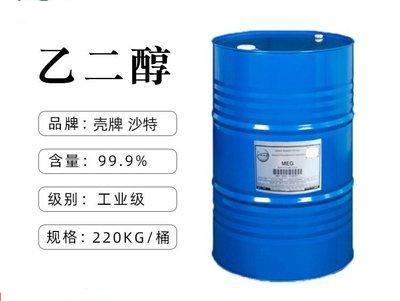is ethylene glycol an electrolyte
What is an Electrolyte?
Electrolytes are substances that dissociate into ions when dissolved in a solvent like water. These ions are charged particles—either positively charged cations or negatively charged anions—that enable the flow of electric currents. For example, common table salt (NaCl) separates into Na⁺ and Cl⁻ in water, making it an excellent electrolyte. Similarly, hydrochloric acid (HCl) is a strong electrolyte as it fully dissociates into H⁺ and Cl⁻ ions in solution.
Electrolytes play critical roles beyond simple conductivity. They regulate processes in our bodies, such as nerve signalling and muscle contractions. If you’re curious, reputable resources like Britannica’s electrolyte guide offer more in-depth explanations and examples of electrolytes.
Polar Nature of Ethylene Glycol
Ethylene glycol is a polar molecule, mainly due to its two hydroxyl (-OH) groups. These groups create strong dipole moments, causing the molecule to have an uneven distribution of charge. Simply put, its structure makes it highly soluble in water because water, also polar, interacts favourably with ethylene glycol molecules.
However, while ethylene glycol’s polar nature helps it mix well with water, this property on its own does not guarantee that it behaves as an electrolyte. For a substance to be an electrolyte, it needs to dissociate into ions. If you’d like to explore why ethylene glycol is polar in more depth, this chemistry community discussion provides additional insights.

Ability to Conduct Electricity
The defining trait of an electrolyte is its ability to conduct electricity. This depends on whether it can dissociate into free ions in solution. Ethylene glycol, despite being polar, does not break apart into charged particles when dissolved in water. It remains a covalent compound, which means it lacks the ions necessary for electric conductivity.
To illustrate, think about pure ethylene glycol or its diluted solutions—these liquids have very low electrical conductivity. While water containing dissolved NaCl or HCl would conduct electricity effectively, water mixed with ethylene glycol barely conducts at all. Studies, like those summarized in this article on ethylene glycol’s electrical properties, confirm that ethylene glycol solutions are not effective conductors of electricity.
When considering its use in antifreeze, this lack of conductivity becomes an advantage, as high conductivity could cause corrosion in engine systems. So, while ethylene glycol benefits from its polar character for solubility, it stops short of qualifying as an electrolyte.
Is Ethylene Glycol an Electrolyte?
When determining whether ethylene glycol qualifies as an electrolyte, it’s essential to understand how it interacts with water, its conductivity behaviour, and findings from scientific research. Ethylene glycol is chemically unique, but does it behave like common electrolytes such as NaCl or acetic acid? Let’s break it down step by step.
Dissociation in Water
To be considered an electrolyte, a substance must dissociate into ions when dissolved in water. This dissociation creates charged particles—cations and anions—that facilitate electrical conductivity. Ethylene glycol, despite being a polar molecule, does not dissociate into these ions in aqueous solutions.
When ethylene glycol is dissolved in water, it remains intact as a neutral covalent compound. Unlike ionic compounds such as sodium chloride, which immediately split into Na⁺ and Cl⁻ ions in water, ethylene glycol molecules only form hydrogen bonds with water. This lack of ion formation is why ethylene glycol solutions do not demonstrate significant electrical conductivity.
Interestingly, the van’t Hoff factor for ethylene glycol in water is 1. This indicates that no ionization occurs, as supported by various sources, including CliffsNotes on nonelectrolytes. This property makes ethylene glycol a nonelectrolyte, meaning it does not produce the charged particles required for electrical flow.
Comparison with Strong and Weak Electrolytes
To better understand ethylene glycol’s behaviour, it helps to compare it with strong and weak electrolytes:
- Strong Electrolytes (e.g., NaCl): These substances completely dissociate into ions in water. Sodium chloride, for instance, yields Na⁺ and Cl⁻ ions that freely move in solution, ensuring excellent electrical conductivity. Strong electrolytes are commonly used in applications like electrochemistry due to their high ion production.
- Weak Electrolytes (e.g., acetic acid): Weak electrolytes partially dissociate into ions. Acetic acid, for example, forms some H⁺ and CH₃COO⁻ ions in water while a portion remains as undissociated molecules. This partial dissociation results in limited electrical conductivity.
- Ethylene Glycol (a Nonelectrolyte): Ethylene glycol differs because it does not dissociate at all. Its molecules dissolve evenly in water without producing any ions. In this regard, ethylene glycol is similar to substances like sugar or ethanol, which are also nonelectrolytes. Resources like this brainly guide on electrolytes provide additional context on how substances are categorized based on their dissociation.
Thus, ethylene glycol stands apart from both strong and weak electrolytes. Its behaviour makes it a unique but ineffective conductor in water-based solutions, which is why it is rarely considered in contexts requiring ionization.
Scientific Studies and Findings
Scientific research has further clarified ethylene glycol’s properties regarding electrolyte behaviour. Studies consistently indicate that ethylene glycol solutions lack conductivity due to the absence of ion formation. For instance, a paper published in the Journal of Industrial & Engineering Chemistry highlighted how ethylene glycol and its mixtures remain molecularly intact in water. This aligns with the observation that it functions as a nonelectrolyte even in diluted solutions.
Further investigations, like this analysis on ethylene glycol-based electrolytes, emphasize how ethylene glycol can blend with water in antifreeze applications but does not enhance electrical conductivity. These findings reinforce that ethylene glycol does not behave like ionic substances that dissociate in water.
Moreover, studies exploring ion interactions in ethylene glycol solutions, such as this study on ionic limits, conclude that non-ionized molecules dominate. Any electrical conductivity observed in glycol-based systems is attributed to external additives, not the ethylene glycol itself.







